#hooded tickspider
Explore tagged Tumblr posts
Text
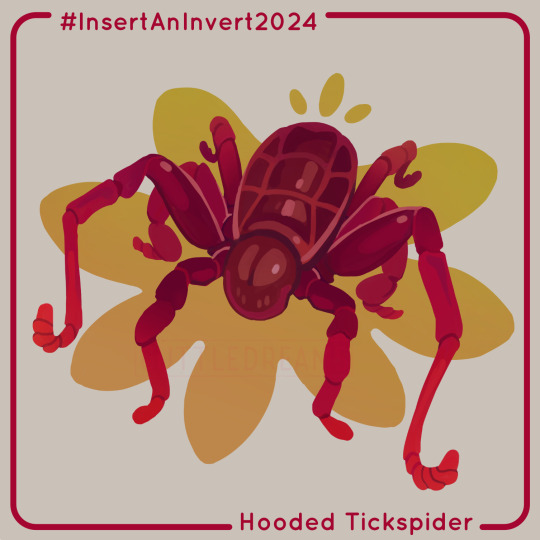
InsertAnInvert2024
February Theme - Relationships: Courtship
Week 5: Hooded Tickspider (Ricinulei)
Between the long feeler legs, interlocking body segments, protective cucullus hood, and cool shades of red, these guys jumped right up to some of my fav arachnids. I'm in love~
------
Interested in learning more about the invertebrate animals around us? Join into the year-long InsertAnInvert event organized by Franzanth, where every week a new animal is spotlighted following each monthly theme! Draw unique animals, read up on cool facts, or just follow the tag online to see a lot of cool artwork.
Prompt List: https://bsky.app/profile/franzanth.bsky.social/post/3khyob3xn742q
#cuttledreams#insertaninvert2024#bug art#hooded tickspider#falling in love with arachnids all over again#what wonders of the world#seriously please look them up they're so fascinating#ricinulei#such perfect colors#beautiful body shape#wonderful wiggly legs#a a a#;o;#<3
93 notes
·
View notes
Text
This is so cool, one of those lineages I've seen mentioned in passing (or as you say, illustrated), but never really given much attention.
Thank you for sharing, not sure I ever would have come across that video otherwise! It's also (finally) prompted me to do a bit of a dive into other lesser-known arachnid orders 😀🕷️
Only thing I'll add, it sounds like there's still a bit of debate as to where in the family tree they sit; close to ticks makes sense (given the 6 legs of the young), but looks like other theories have them as sister taxa to trigonotarbids, Opiliones, or even Xiphosura!
youtube
Ricinulei are such obscure arachnids that this is the only video of one on youtube and maybe the only video of one on the internet???? I grew up seeing them illustrated in books, not even photographed.
1K notes
·
View notes
Text
Round 2 - Arthropoda - Arachnida




(Sources - 1, 2, 3, 4)
Arachnida is a highly diverse class, ranging from the Demodex mites living on you (yes, you) right now, to the Triassic-surviving horseshoe crabs (yes, a 2019 genetics-based analysis places them within Arachnida, though this is still debated), to your friendly pest-controlling house spider. They live worldwide, mainly on land, but some also in freshwater and marine environments. There are over 110,000 named species, with more being discovered every year. They comprise the Ricinulei (“Hooded Tickspiders”), Xiphosura (“Horseshoe Crabs”), Opiliones (“Harvestmen”), Solifugae (“Camel Spiders”), Acariformes (“Acariform Mites”), Parasitiformes (“Parasitiform Mites and Ticks”), Palpigradi (“Microwhip Scorpions”), Pseudoscorpiones (“Book Scorpions”), Scorpiones (“Scorpions”), Amblypygi (“Tailless Whip Scorpions”), Schizomida (“Short-tailed Whip Scorpions”), Uropygi (“Vinegaroons”), and Araneae (“Spiders”).
Adult arachnids have 8 legs attached to a head/thorax segment called the cephalothorax. Their abdomen contains their heart and respiratory organs. Arachnids also have two other pairs of appendages that vary in function between orders. The chelicerae are mainly used in feeding and defense. In spiders, they are used to deliver venom. The second pair, called pedipalps, are used for feeding, locomotion, defense, and/or reproduction. Scorpions, Pseudoscorpions, Ricinuleids, and Horseshoe Crabs have pedipalps that end in a pair of pinchers used for defense and manipulating food. Pseudoscorpions also have a venom gland in their pinchers which they use to immobilize prey. Vinegaroons, Schizomids, Amblypygids, and most Harvestmen have raptorial pedipalps that are used for capturing prey. Solifugids use their palps as another set of legs, and spiders use theirs like hands, while the males also use theirs for mating. Mites and ticks use their palps to sense their surroundings. Mites are more diverse than other arachnids, some only having 6 or even 4 legs. Adult females of Podapolipidae only have a single pair of legs. Some arachnids have a tail-like structure called a telson. Horseshoe Crabs use their telson to flip themselves over if they are turned on their backs. Scorpions use their telson as a stinger to deliver venom, while Palpigrades, Schizomids, and Vinegaroons use theirs as sensory structures. Schizomids and Vinegaroons can also produce acetic acid at the base of their telsons, which they use as a chemical defense sprayed at attackers. Instead of a telson, spiders have spinnerets on their abdomen which they use to create silk. Some have no eyes; some have up to six. Some only have very simple eyes which detect light and shadow, while others have very advanced eyesight.
Arachnids are so diverse that it would be impossible for me to provide a general summary of their behavior here. Some lay eggs, some bear live young. Some have intensive courtship rituals. In most, mothers provide parental care, but in some this falls on the fathers. They can be predators, scavengers, carnivores, omnivores, herbivores, parasites, and everything in between.
Arachnids are one of the oldest living Classes of land animals. Xiphosurans first appeared in the Late Ordovician, with modern horseshoe crabs appearing in the Carboniferous and becoming more common in the Triassic. The spider-like Order Uraraneida first appeared in the Permian, with true spiders appearing in the Carboniferous. There’s a lot of talk about how horseshoe crabs predate the dinosaurs, and that’s true, but so do other arachnids… and most other arthropods as well!

Propaganda under the cut:
While only Spiders, Scorpions, and Pseudoscorpions have venom, they all have different methods of injecting it, meaning they likely independently evolved venom. Which is wild to me.
Spiders tend to get a bad rap (mostly due to western media banking on arachnophobia and spreading misinformation) but they are incredibly beneficial to humans, eating many of the species we consider pests. Some crops, such as cranberries, tomatoes, and potatoes, rely on spiders for pest control. It has been found that wherever farmers release spiders, their crop yields increase, while also cutting down on the use of chemical pesticides by 80%.
There are around 50,000 species of spider and all but one family (Uloboridae) is venomous. However, this venom is mainly used to capture prey, and only 10 genera have venom considered medically significant to humans. Bites are rarer than the media would have you think, and deaths are even more rare, as they are usually a result of secondary infections, allergic reaction, or pre-existing conditions. You are more likely to die from a mosquito bite.
Even if they weren’t super important and helpful to humans, spiders are still just small animals living their lives and are all too often unfairly demonized. I’ll get off my soapbox now but listen… I’m Love Them. They are just little guys.
Anyway, Ricinuleids have a hood, called a cucullus, which can be raised or lowered over their head. This hood is also where females will carry their eggs until they hatch. Baby hoodie.
Horseshoe Crab blood is blue due to a copper-based respiratory pigment called hemocyanin. It is often harvested for its unique reactions to bacterial contamination and is thus used in FDA testing. Horseshoe Crab blood has saved millions of human lives, however, overharvesting for their blood as well as for fishing bait has put their populations into decline, which has in turn affected populations of shorebirds which depend on their eggs as migratory fuel. Many areas have enacted regulations on harvesting and established captive breeding programs.
Harvestmen are sometimes referred to as spiders, but they are actually closer related to scorpions!
Harvestmen are unique among arachnids for their high diversity of feeding behavior. Many species are omnivorous, eating small insects, fungi, and plants. Some species are scavengers. Some species feed on fecal matter! Unlike most other arachnids, they do not have sucking mouthparts, and instead chew their food with tiny pinching jaws.
Many arachnids, especially most scorpions, are biofluorescent, glowing under UV light. There are many hypotheses for why this is, but it may allow them to detect the presence of UV light themselves, letting them know when there is a full moon vs a new moon.
Scorpions can also detect light through sensors in their tail!
Scorpion claws and tails are reinforced with iron and nickel
Mites are incredibly diverse and live everywhere. Many live in the soil and aid in decomposing, some live in water, some live on plants, some live in plants and create galls, some eat fungi, some eat lichen, some eat carrion, some are predators, some are parasites. Almost every species on land (mammals, reptiles, ants, plants, etc) has at least one mite species associated with it.
Vinegaroon courtship rituals involve a dance that can last up to 12 hours of the female testing the male’s endurance. Female vinegaroons invest a lot into their children, often starving themselves in the process, so they must be absolutely certain the male has good fitness.
#you would not believe how hard it is to google colorful scorpion photos and not find either AI or pest control sources#Oogie Boogie Voice I Don’t Know Which Is Worse#Also I tried My Best to not get too passionate about spiders but like#Harvestmen are actually my favorite arachnids but I fear the bias against spiders is going to damage the results of this poll#and I love spiders I have 11 as pets not to mention the like dozen bathroom spiders who are great pest control and also friends#but the spider hate is so strong that I just worry#i understand if they don’t win but I also don’t want them to bring all the other arachnids down with them#round 2#animal polls#arthropoda
109 notes
·
View notes
Text

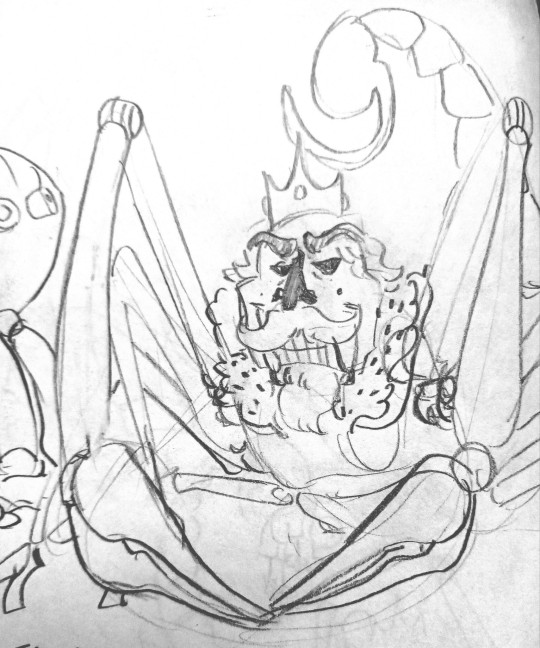
So i yassified (very slightly, more like redrew) These Two from the last post
Also, freakily enough, Camel spider bartender actually has silicone "skin" and hair on its face and abdomen, so it feels organic. For no reason other than gross factor. It works
Also, pseudoscopion windup! They work alongside the schizomida freaks and are generally stronger, and aren't as populous as the schizomida ones.


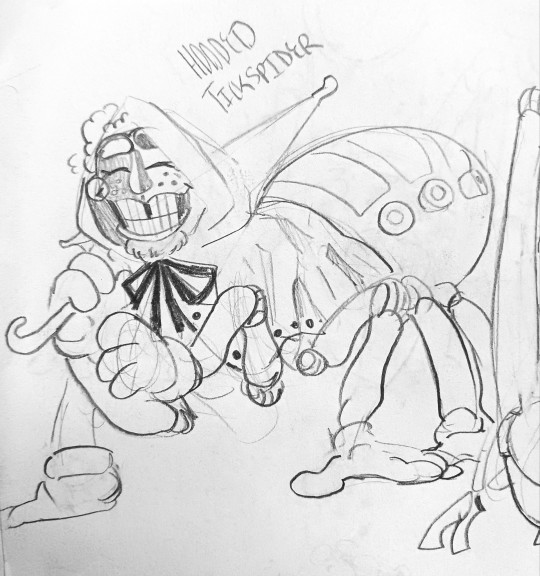
THIS RICINULEI ONE, WHICH, OH MY GOD. WHY WAS I NEVER INFORMED OF THESE CUTIE PATOOTIES.
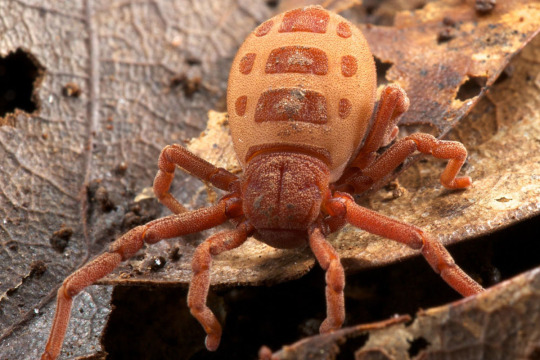
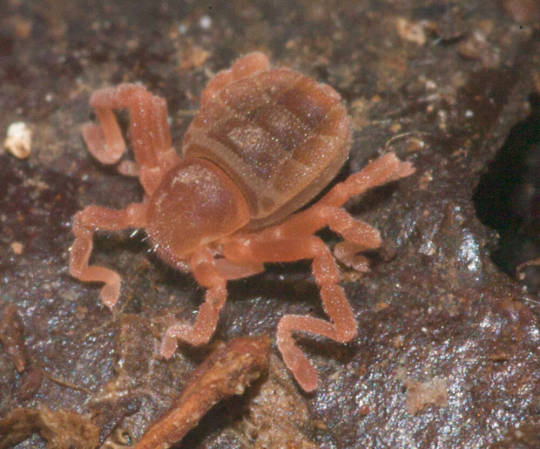
LOOK AT THEM THEY LOOK LIKE IF A WEEVIL AND A SPIDER HAD A BABY!!! ITS GOT BOOTS ON!!! colloquial name for em are hooded tickspiders and despite their name they aren't bloodsuckers just unfortunately named, and they don't have eyes, which is why this guy has constantly closed eyes. I lvoe him so so much. he was inspired by koalas and Uncle Klunk from showbiz pizza, thank you garf for introducing me to Klunk.
I think he and DJMM would be good friends not just because they're both very spiderlike but also because he's not very popular in comparison to the rest of the cast.



DJMM DELUXE!
Many of his improvements are very based on their restaurant location, as DJMM deluxe is one of the few who are not up for auction. He coordinates shows and oftentimes is on the design team for just about anything in the restaurant, be it a seasonal theme or new, upcoming feature. That and he actually produces "silk!"
He's based on habronattus clypeatus, a paradise spider, ones that dazzle their women with their hairy, colorful armpits. Cool!
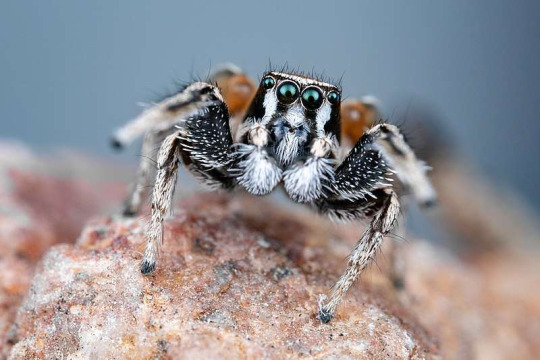
big gallery of adult forms of almost every species in habronattus
More salt to DJMM's wound but DJMM was actually very popular when he was in the restaurant (partially because he was the most recognizable arachnid, yknow, an actual spider) and when he was sold there was a lot of demand for him to be back, and because of that demand he was hoping that he just might have a chance of getting out of the plex just due to the nostalgia of the original DJMM not being there.
And then Deluxe was made.
And because Deluxe was made, there's not only no chance of him getting back, but there's also now no place for him even if he did get back.
13 notes
·
View notes
Photo


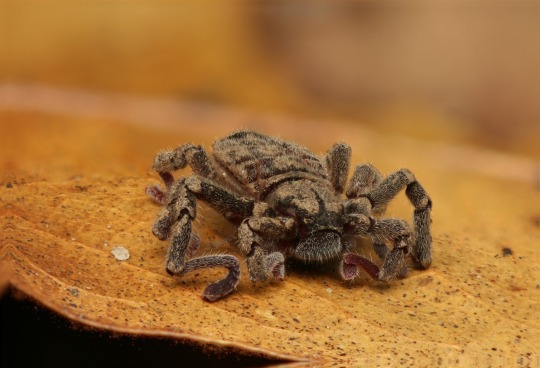
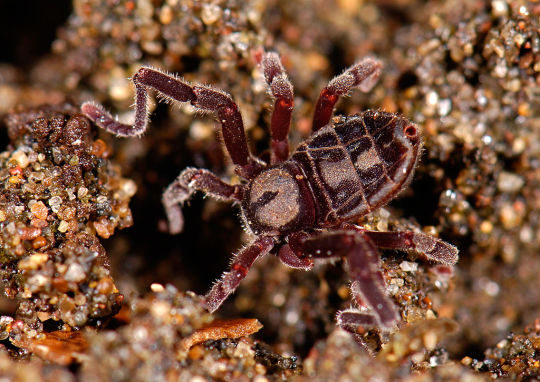





Hooded tickspiders (Ricinulei) are an order of small, predatory arachnids that feed on other arthropods. Despite the name, they are neither true spiders nor ticks. First described from fossils, these arachnids were once thought to be extinct, but more than 70 living species have since been described worldwide.
They are notable for their hood (or cucullus) which can be raised and lowered over the head; when lowered, it covers the mouth and chelicerae entirely. Hooded tickspiders have no eyes, but do have light-sensitive areas of cuticle on their exoskeleton.
After receiving a spermatophore from a male, the female will carry a single fertilized egg under her hood until it hatches.
Photos 1-3 by cesarfavacho, 4 by M. Hedin, 5 by b_akeret, 6-7 by alex-valmond, 8 by aztekium_tutor, and 9 by braytonidae
422 notes
·
View notes
Text
don't fucking challenge me i know every beast
NON-BEASTLY BEASTS:
Non-ParaHoxozoa:
Calcarea (Calcareous Sponges)
Hexacinellida (Glass Sponges)
Demospongiae (Demosponges)
Tentaculata (Tentacled Ctenophores)
Beroida (Non-Tentacled Ctenophores)
ParaHoxozoa, Non-Nephrozoa:
Placozoa
Anthozoa (Corals, Sea Pens, and Tube-Dwelling Anenomes)
Medusozoa (Jellyfish and Hydrozoans)
Myxozoa
Xenacoelomorpha
MINIBEASTS:
Spiralia, Non-Lophotrochozoa:
Gnathifera (Rotifers and Jaw Worms)
Mesozoa
Rouphozoa (Flatworms and Gastrotrichs)
Lophotrochozoa, Non-Mollusca:
Cycliophora
Annelida (Segmented Worms)
Nemertea (Ribbon Worms)
Bryozoa
Entoprocta
Phorodina (Horseshoe Worms)
Brachiopoda
Mollusca:
Solenogastres
Caudofoveata
Polyplacophora (Chitons)
Bivalvia (Clams, Scallops, Mussels, Oysters, Cockles, and others)
Monoplacophora
Scaphopoda (Tusk Shells)
Gastropoda (Snails, Slugs, Sea Snails, Sea Slugs, and others)
Cephalopoda (Nautiloids, Cuttlefish, Squid, and Octopi)
Ecdysozoa, Non-Arthropoda:
Loricifera
Priapulida (Penis Worms [sic])
Kinorhyncha (Mud Dragons)
Nematoda (Roundworms)
Nematomorpha (Horsehair Worms)
Tardigrada (Tardigrades)
Onchyophora (Velvet Worms)
Arthropoda, Non-Mandibulata:
Pycnogonida (Sea Spiders)
Xiphosura (Horseshoe Crabs)
Acariformes (Cheese Mites, Scabies Mites, Eyelash Mites, House Mites, and others)
Opiliones (Harvestmen)
Ricinulei (Hooded Tickspiders)
Solifugae (Camel Spiders)
Parisitiformes (Ticks, Varroa Mites, and others)
Pseudoscorpiones (Pseudoscorpions)
Scorpiones (Scorpions)
Araneae (Spiders)
Amblypigi (Whip Spiders)
Urgopygi (Whip Scorpions)
Mandibulata, Non-Insecta:
Chilopoda (Centipedes)
Symphyla (Pseudocentipedes)
Pauropoda
Diplopoda (Millipedes)
Ostracoda (Seed Shrimp)
Mystacocarida
Branchiura (Fish Lice)
Pentastomida (Tongue Worms)
Copepoda (Copepods)
Tantulocarida
Thecostraca (Barnacles and others)
Malacostraca (Crabs, Lobsters, Shrimp, Isopods, Amphipods, and others)
Cephalocarida (Horseshoe Shrimp)
Branchiopoda (Fairy Shrimp, Tadpole Shrimp, Water Fleas, and others)
Remipedia
Collembola (Springtails)
Protura
Diplura (Two-Pronged Bristletails)
Insecta, Non-Neoptera:
Archaeognatha (Jumping Bristletails)
Zygentoma (Silverfish, Firebrats, and others)
Odonatoptera (Dragonflies and Damselflies)
Ephemeroptera (Mayflies)
Neoptera, Non-Holometabola:
Zoraptera (Angel Insects)
Dermaptera (Earwigs)
Plecoptera (Stoneflies)
Orthoptera (Grasshoppers, Crickets, and others)
Mantodea (Mantises)
Blattodea (Cockroaches and Termites)
Notoptera (Ice Crawlers and Rock Crawlers)
Phasmatodea (Stick Insects and Leaf Insects)
Embioptera (Webspinners)
Psocodea (Lice)
Hemiptera (Shield Bugs, Aphids, Scale Insects, Cicadas, Planthoppers, Assassin Bugs, Water Boatmen, Pond Skaters, and others)
Thysanoptera (Thrips)
Holometabola
Hymenoptera (Sawflies, Bees, Wasps, and Ants)
Strepsiptera
Coleoptera (Beetles)
Raphidioptera (Snakeflies)
Neuroptera (Lacewings, Antlions, and others)
Megaloptera (Dobsonflies and others)
Lepidoptera (Butterflies and Moths)
Trichoptera (Caddisflies)
Diptera (Flies, Mosquitoes, Gnats, Midges, Hoverflies, and others)
Mecopteroidea (Scorpionflies, Hangingflies, and Fleas)
SLIGHTLY MORE BEASTLY BEASTS:
Ambulacraria:
Echinodermata (Starfish, Sea Urchins, Brittle Stars, Feather Stars, and others)
Hemichordata (Acorn Worms and others)
Chordata (Non-Vertebrata):
Leptocardii (Lancelets)
Tunicata (Sea Squirts, Salps, Pyrosomes, and others)
Vertebrata (Non-Eutelostomi):
Myxini (Hagfish)
Hyperoartia (Lampreys)
Elasmobranchii (Sharks, Rays, and Skates)
Holocephali (Chimaeras)
Actinopterygii (Non-Acanthomorpha):
Cladistia (Bichirs and Reedfish)
Acnipenseriformes (Paddlefish and Sturgeons)
Halecomorphi (Bowfins)
Ginglymodi (Gars)
Elopocephalai (Eels, Ladyfish, Halosaurs, and others)
Osteoglossocephala (Arapaima, Goldeye, and others)
Clupei (Herrings and Anchovies)
Apelocephali (Slickheads and others)
Anotophysa (Milkfish, Beaked Salmon, and others)
Cypriniformes (Carp, Goldfish, Loaches, Minnows, and others)
Characiformes (Characins, Pacu, Pirahnas, Tetras, and others)
Gymnotiformes (Knifefish and Electric Eels)
Siluriformes (Catfish)
Lepidogalaxii (Salamanderfish)
Protacanthopterygii (Salmon, Pike, Trout, Barreleye, and others)
Stomiati (Smelts, Marine Hatchetfish, and others)
Ateleopodia (Jellynose Fish)
Aulopa (Bombay Duck and Lancetfish)
Myctophata (Lanternfish)
Acanthomorpha:
Lampridacea (Oarfish, Opah and others)
Paracanthomorphacea (Cods, Dories, Cavefish, and others)
Polymixiacea (Beardfish)
Berycimorphaceae (Fangtooths, Pineconefishes, and others)
Holocentrimorphaceae (Soldierfish)
Ophidiiformes (Pearlfish)
Batrachoidimophara (Toadfish)
Gobiomorpharia (Seahorses, Pipefish, Tunas, Flying Gurnards, and others)
Anabantaria (Gouramis, Swamp Eels, and others)
Carangaria (Swordfish, Flatfish, Remoras, and others)
Ovalentaria (Blennies, Cichlids, Flying Fish, Mullets, and others)
Eupercaria (Anglerfish, Pufferfish, Wrasses, Sunfish, Sticklebacks, Lumpsuckers, Lionfish, Angelfish, Perches, Archerfish, Triggerfish, Bass, and others)
Sarcopterygii:
Actinistia (Coelocanths)
Dipnoi (Lungfish)
BEASTS PROPER:
Lissamphibia
Salientia (Frogs and Toads)
Caudata (Salamanders and Newts)
Gymnophiona (Caecilians)
Reptilia (Non-Aves)
Rhynchocephalia (Tuatara)
Dibamidae (Blind Skinks)
Gekkota (Geckos and Flap-Footed Lizards)
Scinciformata (Skinks and others)
Laterata (Tegus and Worm Lizards)
Anguimorpha (Slow Worms, Monitors, Gila Monster, and others)
Iguania (Anoles, Iguanas, Chameleons, and others)
Serpentes (Snakes)
Testudines (Turtles and Tortoises)
Crocodilia (Crocodiles, Gharials, Alligators, and Caiman)
Aves (Non-Passeriformes):
Palaeognathae (Ostriches, Kiwis, and others)
Galloanserae (Chickens, Ducks, and others)
Mirandornithes (Flamingos and Grebes)
Columbimorphae (Doves and others)
Otidimorphae (Cuckoos, Turacos, and Bustards)
Gruimorphae (Gulls, Cranes, Auks, and others)
Ophistocomidae (Hoatzins)
Strisores (Hummingbirds, Nightjars, Potoos, and others)
Phaethoquornithes (Boobies, Loons, Ibises, Penguins, Albatrosses, Tropicbirds, and others)
Acciptirimorphae (Vultures, Hawks, Eagles, and others)
Strigiformes (Owls)
Coraciimorphae (Kingfishers, Woodpeckers, Quetzals, and others)
Cariamiformes (Seriemas)
Falconiformes (Falcons)
Psittaciformes (Parrots)
Passeriformes:
Acanthisitti (New Zealand Wrens)
Tyranni (Overnbirds, Spadebills, Gnateaters, and others)
Menurida (Lyrebirds and others)
Climacterida (Bowerbirds and others)
Meliphagida (Honeyeaters, Bristlebirds, and others)
Orthonychida (Logrunners and others)
Corvides (Crows, Jays, Boatbills, Shriketits, Sittellas, Birds-Of-Paradise and others)
Passerides (Satinbirds, Sparrows, Larks, Tits, Oxpeckers, Thrushes, Wrens, Finches, Tanagers, Nuthatchers, and others)
Mammalia (Non-Laurasiatheria):
Monotremata (Platypus and Echidnas)
Marsupialia (Kangaroos, Opossums, Wombats, and others)
Xenarthra (Anteaters, Sloths, and others)
Athrotheria (Elephants, Manatees, Aardvarks, and others)
Lagomorpha (Rabbits, Hares and others)
Rodentia (Mice, Rats, Cavies, Beavers, Squirrels, and others)
Scandentia (Treeshrews)
Dermoptera (Colugos)
Primates (Lemurs, Marmosets, Baboons, Gibbons, Chimpanzees, and others)
Lauasiatheria (Non-Carnivora):
Eulipotyphla (Shrews, Moles, Hedgehogs, and others)
Chiroptera (Bats)
Artiodactyla (Girrafes, Deer, Whales, Pigs, Camels, and others)
Perissodactyla (Horses, Tapir, and Rhinoceros)
Pholidota (Pangolins)
Carnivora:
Viverroidea (Hyenas, Mongooses, Civets, and others)
Feloidea (Lions, Tigers, Caracals, Wildcats, Leopards, and others)
Nandiniidae (African Palm Civet)
Caninae (Wolves, Foxes, and others)
Ursidae (Bears)
Musteloidea (Skunks, Weasels, Otters, Raccoons, and others)
Pinnipedia (Seals, Sea Lions, and Walruses)

Interview questions for gym leaders
4K notes
·
View notes
Photo

Hooded tickspider (Cryptocellus goodnighti)
Photo by Marshal Hedin
#fave#stock#hooded tickspider#cryptocellus goodnighti#cryptocellus#ricinoididae#ricinulei#arachnida#euchelicerata#chelicerata#arthropoda#panarthropoda#ecdysozoa
29 notes
·
View notes
Note
What do you think of the hooded tickspider?


i think they are extremely adorable, id love to own some if I got the chance!
34 notes
·
View notes
Text
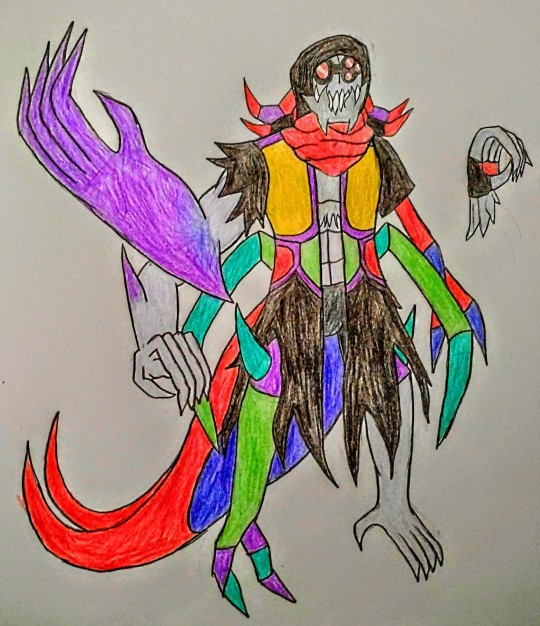

SonicAsura's Doodles #53
His body still felt like it was burning and so did his eyes. Everything now smaller, clearer, yet completely wrong. Hank could feel every appendage, both new and modified, move in tandem with his thoughts. What was the name of that damn project? The one 2BDamned wanted him to dismantle... 'Project Arachnid King'.
<Project Arachnid King, the goal to utilize the power of the arachnid animal class for various purposes. The DNA of different arachnid species combined with a living subject. Current specimen, Hank J. Wimbleton, was given cocktail N3 which is mostly made from the genetic code of a brown recluse with traces of various whip scorpions, whip spiders, scorpions, hooded tickspiders and pseudoscorpions. Subject underwent intense transformation before going berserk. Specimen whereabouts are unknown.>
I decided to take a spin at the whole Spider Hank niche. Went for a more chimera approach than just sticking to one animal. I looked up what animals were a relative to the spider which led to the idea of the Arachnid King.
This form of Hank stands about 17'8 ft in size and around 700 lb. His abdomen is actually a foldable scorpion tail around 12 ft in length with very powerful paralyzing venom. It can also spin webs just like his hands, feet and Hank can spray large globs of webbing.
The spider limbs on the back of his head can fold to form a makeshift face mask and move similar to a face hugger. He has 5 eyes with two hiding underneath the large goggle lense. Hank can climb walls just like any spider.
That's all I can share for now. Until next time folks, continue to thrive in the madness. Here's the list I found on arachnid classes.
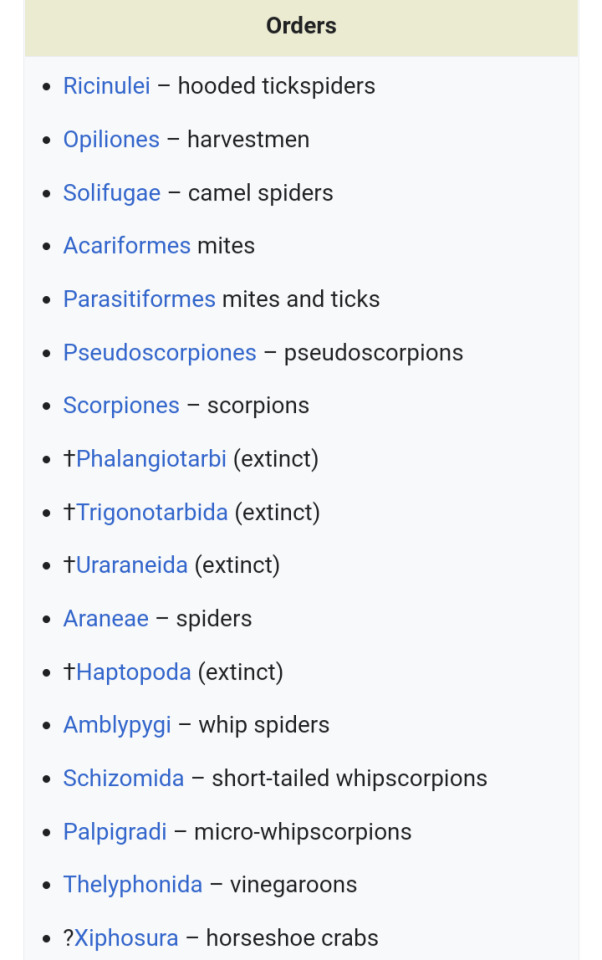
#my art#doodles#madness combat#hank j wimbleton#hank j. wimbleton#spiderhank#spider hank#arachnid king#madcom#madness hank#madness project nexus#sonicasura#spider!hank#arachnid king hank#spider hank j wimbleton#spider hank j. wimbleton#arachnids
5 notes
·
View notes
Text
How do spider lungs work?
@theflashisgone asked: “So why do even tiny spiders have book lungs and how do those work?”
Arachnids and insects are both arthropods, so they have similar breathing systems. As you stated, spiders have book lungs. Arachnids, can be split into two groups, those with book lungs (pulmonate arachnids) and those without (apulmonate arachnids). Pulmonate arachnids consist of spiders (order Araneae), scorpions (order Scorpiones), whip scorpions (order Thelyphonida), tail-less whip scorpions (order Amblypygi), and short-tailed whip scorpions (order Schizomida). While apulmonate arachnids consists of microwhip scorpions (order Palpigradi), harvestmen (order Opiliones), ticks/mites (subclass Acari), false/book scorpion (order Pseudoscorpion), hooded tickspider (order Ricinulei), and camel spiders (order Solifugae).
Pulmonate arachnids, breathe using one or two book lungs. Similar to insects, they also have spiracles that bring air into the body. A book lung is named due to its many folds similar to the pages of a book. Unlike insects, the hemolymph (arthropod ��blood”) is used to transport oxygen. These many folds increase surface area, which increases gas exchange. A large amount of gas exchange allows more oxygen to be brought into the hemolymph. Even though this form of breathing transports oxygen similarly to us humans, it is still not a lung like ours. A book lung is still a passive act of breathing, like insects, as the air flows in on its own without the aid of the body.


114 notes
·
View notes
Text
Observation of the Week, 4/20/17

This Cryptocellus tickspider, seen in Panama by stephane_degreef, is our Observation of the Week!
Belgian-born environmental engineer Stéphane De Greef has a humorous yet insightful take on the field of biology:
I think every child is interested in nature until their mother tell them “Don’t touch that! It’s dirty! Dangerous! Disgusting!" Children who just ignore these warnings usually become biologists! In many of us, you’ll still find the same enthusiasm, passion and curiosity we had when we were children. It’s intense, it’s in us 24/7 and, frankly, it’s often contagious! When I was a kid, I lived near a small forest in Belgium. Every weekend, I would walk out early morning with my gumboots and my pocketknife and go exploring the nearby woods, streams and caves...And guess what? Thirty years later, I’m still doing the exact same thing. And I love it.
While he has spent over a decade in Southeast Asia, Stéphane is now spending an entire year in Panama’s Cocobolo Nature Preserve, studying arthropod diversity. He has a “soft spot” for ants and arachnids, and wants to “use my findings for awareness and education, and to promote the place so that more people can experience the rainforests and cloud forest first hand and understand why it’s so important to preserve it.”
He found the amazing organism pictured above while leading a group of students from Virginia Tech, collecting unusual arthropods. “So there I was,” recalls Stéphane, “walking in the rainforest with my gumboots, looking under rotting logs for unusual critters, when I noticed these small arachnids. Too stocky to be harvestmen. Too flat, thick and slow to be spiders. But I knew I’d seen them before in photos elsewhere: on Piotr Naskrecki’s Facebook wall.”
Stéphane collected several specimens and photographed them back at the research station, for the Meet Your Neighbours site. Stuart Longhorn on iNat was able to identify them as members of the genus Cryptocellus, which belong to the small arachnid order of Ricinulei, or the Hooded Tickspiders.
Numbering only 58 described species, little is known about the Hooded Tickspiders. They are tiny, usually only reaching 10mm in length; predatory; and have a retractable “hood” that covers their chelicerae (mouthparts). Lacking true eyes, they use the chelicerae and their long second pair of legs as sensory organs, and in males the third pair of legs are modified for copulation. In fact, this third pair of legs can be used taxonomically to differentiate between genuses and species. They are found only in the Neotropical region and West-Central Africa. Oh, and like ticks and mites, tickspider young only have six legs - the other pair grows in later!

Outreach is an important part of Stéphane’s work, and while he uses Facebook, he says it’s not great for organizing his data, “which is why I turned to iNaturalist. It allows me to share my findings in a nice, clean, efficient way, including my photos, my field notes and geolocation. I get the benefits of crowdsourcing the identification and people who are not keen on Facebook can still access my work. It’s nice, tidy and efficient, and the species catalogs are exhaustive and up-to-date...While iNaturalist hasn’t changed the way I interact and see the natural world, it definitely changed the way I share my discoveries with the world.”
- by Tony Iwane
- Stéphane has a great website that includes his photos, a field guide to arthropods of northwest Cambodia, information about his upcoming Bug Camps in Panama, and more. Check it out!
- In case you wanted to know more about tickspiders...
- Gumboot dancing is an artform in Africa, here’s a cool video about it. Oh, and Paul Simon’s Gumboots is a great song as well.
#panama#arthropods#bugs#bug camp#hooded tickspider#arachnids#arachnid#biology#citsci#nature#wildilfe#macro
0 notes
Text

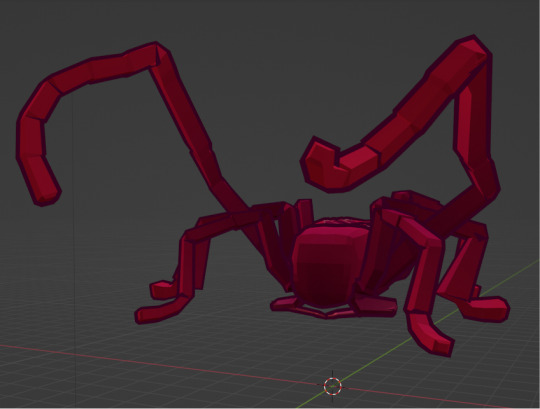
Guess who's been learning blender
My powers only grow with each model I scrabble together
youtube
youtube
Practice sessions with a friend all weekend made a huge difference!
#cuttledreams#blender#bug art#hooded tickspider#clown isopod#even managed to get IK's to work#that's usually where I rage quit after the model busts twenty times lmao#even learned outlining and looping animation#hair is broken though#cant get alt s to work on points so no taper#will figure that out later though#gotta take a break for a while but will be back for shenanigans#need more practice so I can make my oc's#Youtube
49 notes
·
View notes
Text
Wait it’s been thought that they might be RICINULEI????

Hooded tickspiders!?!?
who’s a good girl
47K notes
·
View notes
Text
Biology Photo: The Orders Of Arachnid
Biology Photo: The Orders Of Arachnid
Related Posts
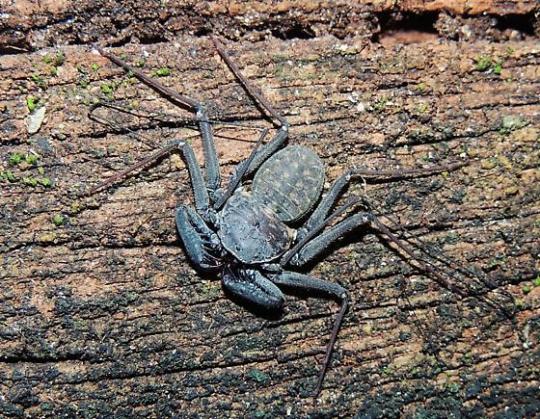
Tailless Whipscorpions Copyright © 2014 Li

Spider Copyright © 2004 Stefanie Hartmann

Whipscorpion Copyright © 2007 Cliff Bernzweig

Harvestmen Copyright © 2006 Lynette Elliott

Microscorpion Copyright © 2017 Robert Deans

Hooded Tickspider By M. Hedin – https://www.flickr.com/photos/23660854@N07/2532178749, CC BY 2.0, https://commons.wikimedia.org/w/…
View On WordPress
0 notes
Text
untranslatablejapaneseidiom reblogged your post: Spider - Camel Spider Tick - Hooded Tickspider...
#I love this but I also wish they had separate names#bc tailless whipscorpions deserve to have their own name#and not be named after not only regular scorpions#but also whipscorpions#i mean whipscorpions also get the name vinegaroons#let my children have their own name
I agree, it’s unfair. At least scientific names exist so we can call them solifugids and amblypygids and so forth. But even then, pseudoscorpions remain in the shadow of scorpions.
5 notes
·
View notes
Text
@ hooded tickspiders get some fucking eyes you little creeps
3 notes
·
View notes